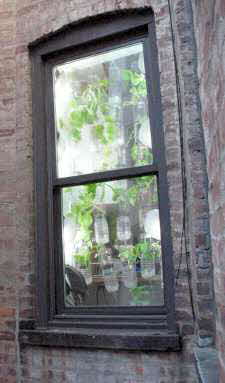Home | FOOD ARTICLES | Food Trivia | Today_in_Food_History | Food_History_Timeline | Recipes | Cooking_Tips | Food_Videos | Food_Quotes | Who’s_Who | Culinary_Schools_&_Tours | Food_Trivia_Quizzes | Food_Poems | Free_Magazines | Food_Festivals_and_Events
Food Articles, News & Features Section
You are here > Home > Food Articles >
FREE Magazines
and other Publications
Free Professional and Technical Research, White Papers, Case Studies, Magazines, and eBooks
HYDROPONIC LETTUCE
EarthTalk®
From the Editors of E/The Environmental Magazine
Dear EarthTalk: What are the environmental benefits of the hydroponic growing of lettuce and other crops?
-- Bruce Keeler, Oakland, CA (10/24/10)
While organic agriculture is all the rage, growing by leaps and bounds to meet increased consumer demand for healthier food, another option that’s less well known but just as healthy is hydroponics, whereby plants are grown in nutrient-fortified water-based solutions without a soil substrate whatsoever. Besides not needing chemical fertilizers or pesticides (most of which are toxic as well as derived from petroleum), hydroponics also take up much less space than traditional agriculture, meaning that even an apartment window can yield impressive amounts of food throughout the calendar year.
In traditional forms of agriculture, soil facilitates the process of providing the mineral nutrients that plants need to grow. Organisms in the soil break down the nutrients into inorganic basic forms that the plants can then take up accordingly and put to use photosynthesizing. Of course, some of the organisms the soil attracts are unwelcome, and not every speck of soil is ideal as a growth medium, so we have come up with ways to kill off unwanted pests (pesticides) and pump up the ground’s productivity (fertilizers).

Hydroponic growing not only eliminates the need for chemical fertilizers and pesticides but also takes up much less space than traditional agriculture, meaning that even an apartment window can yield impressive amounts of food throughout the calendar year.
Ars Electronica, The Window Project.
But growing fruits and vegetables hydroponically obviates the need for fertilizers and pesticides—let alone soil—altogether. “Without soil, there is little to no microbial activity, so the plants depend on direct nutrients from nutrient solutions,” reports Alexandra Gross in E – The Environmental Magazine. “And because hydroponics occur in a highly controlled space and microbial activity is at minimum, pesticides, insecticides and herbicides are not needed.”
In most hydroponic systems, the nutrient solutions include inorganic salt fertilizers and semi-soluble organic materials such as bat guano (manure), bone meal and fish emulsion. Since growing hydroponically does not require chemical fertilizers and pesticides, the method is inherently “organic,” although the federal government doesn’t recognize it as such officially. Hydroponic farmers are trying to get the U.S. Food & Drug Administration to take soil out of the equation when it comes to defining organic so that their products can bear an organic certification label on store shelves and appeal to a quickly growing segment of green-minded consumers.
Hydroponic methods are becoming especially popular with a new wave of green-minded urban gardeners. When artist Britta Riley began growing her own food hydroponically in the window of her fifth floor Brooklyn apartment in 2009—and sharing her findings with like-minded folks all over the world via the Internet—the Windowfarms Project was born. In less than two years, some 13,000 people have joined the online community at the windowfarms.org website, where members can download free how-to instructions for homemade hydroponic systems.
Along with the Windowfarms Project website, a couple of good sources of hydroponic growing information, inspiration and supplies include Hydroponics Online and Simply Hydroponics and Organics.
CONTACTS: E – The Environmental Magazine, www.emagazine.com/view/?5221; The Windowfarms Project, www.windowfarms.org; Hydroponics Online, www.hydroponicsonline.com; Simply Hydroponics and Organics, www.simplyhydro.com
SEND YOUR ENVIRONMENTAL QUESTIONS TO: EarthTalk®, c/o E – The Environmental Magazine, P.O. Box 5098, Westport, CT 06881; earthtalk@emagazine.com E is a nonprofit publication. Subscribe: www.emagazine.com/subscribe; Request a Free Trial Issue: www.emagazine.com/trial
RELATED ARTICLES
Please feel free to link to any pages of FoodReference.com from your website.
For permission to use any of this content please E-mail: james@foodreference.com
All contents are copyright © 1990 - 2025 James T. Ehler and www.FoodReference.com unless otherwise noted. All rights reserved.
You may copy and use portions of this website for non-commercial, personal use only.
Any other use of these materials without prior written authorization is not very nice and violates the copyright.
Please take the time to request permission.

